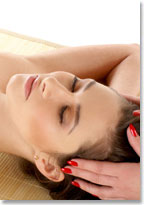 Massage therapy consists of manipulating the superficial and deeper layers of muscle and connective tissue using various techniques to improve health and function, aid in the healing process, and promote relaxation and well-being.
Massage therapy consists of manipulating the superficial and deeper layers of muscle and connective tissue using various techniques to improve health and function, aid in the healing process, and promote relaxation and well-being.
Massage therapy and other types of body work have a long history of being used during fasting. In Ayurvedic medicine, which dates back thousands of years, fasting has been recommended prior to getting an oil massage. Mohandas Gandhi, who fasted regularly, received massages daily to alleviate muscle soreness.
Massage therapy can be useful during a fast to help with relaxation and stiffness. However, aggressive types of body work, such as Rolfing, deep tissue, and sports massage, are best avoided during a fast. Many fasting retreats and clinics offer daily massage for participants who are juice, water, or dry fasting.
The benefits of massage therapy have been well-researched. The difficulty in evaluating the studies examining massage is due to the large number of diverse techniques used and the vast differences in the subject’s health. For example, one study examined sinus massage, while another evaluated massage for osteoarthritis of the knee, and yet another studied the effects of massage on autism. Furthermore, there are over 80 different recognized massage modalities.
Because a patient can be particularly vulnerable when fasting, it is important that the massage therapist be properly trained.